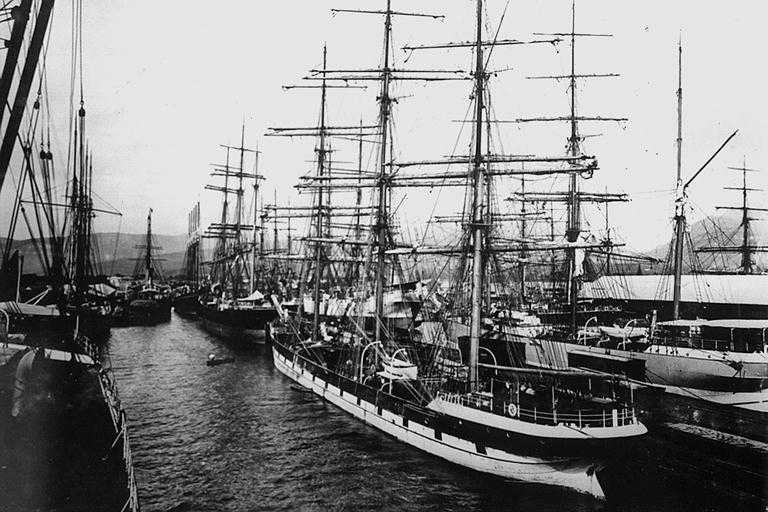In the early 1800’s, a new kind of ship was manufactured. It was a leaner, more slender ship, built for speed rather than capacity. Its sharp long prow was made out of expensive oak, and its sails spread 160 feet across. These ships were called clipper ships. They ran wide open, day and night, virtually ignorant of weather conditions, arriving beaten and battered at their destination, but on time no less.
 In the 1840’s, still recovering from a 5 year economic depression, the US built 160 of these low capacity, more expensive ships. The reason was that the gold rush was booming out west, and supplies were in high demand. The need for basic materials was so great that supplies could sell for as much as 1000% more than on the depression stricken east coast. These clipper ships were resilient and fast, and could travel the east coast, move down around the tip of South America, and be back up to the San Francisco Bay in a record 89 days.
In the 1840’s, still recovering from a 5 year economic depression, the US built 160 of these low capacity, more expensive ships. The reason was that the gold rush was booming out west, and supplies were in high demand. The need for basic materials was so great that supplies could sell for as much as 1000% more than on the depression stricken east coast. These clipper ships were resilient and fast, and could travel the east coast, move down around the tip of South America, and be back up to the San Francisco Bay in a record 89 days.When the gold dust ran out on the west coast, it was shortly after discovered in Australia. The clipper ships quickly turned their sails and headed towards the next opportunity.
In business, we should strive to be like the clipper ships, constantly looking for new opportunities and having the ability to benefit from situations that fall out of balance. How quickly could you mobilize resources to take advantage of these situations?
The Clipper Ship Strategy stands for seeing where value creation can happen by understanding the flow of money and recognizing the variances in pricing and resources, then being agile enough to take advantage of the situation. To read more on this, check out the book The Clipper Ship Strategy by Richard Maybury.
At Efficience, our Clipper Ship Strategy is having a team in India with the high intelligence and low cost, allowing our clients to create software tools that make them more competitive at prices they can afford. Have you considered what your Clipper Ship Strategy is?



